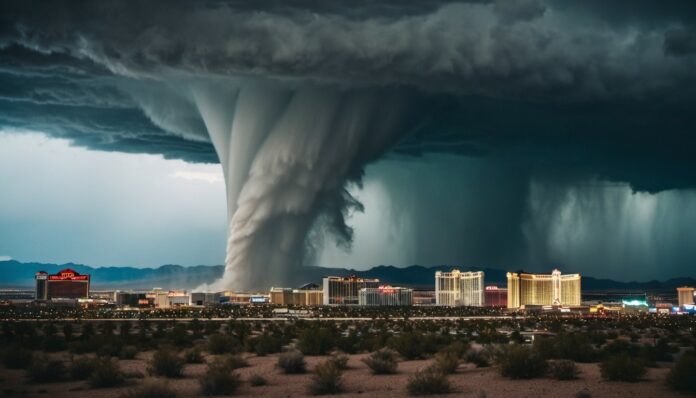A tornado is a powerful, spinning column of air that stretches from a thunderstorm down to the ground. These storms can cause a lot of damage because they have very strong winds that can pick up and toss around cars, trees, and even houses. Tornadoes are amazing to watch from a safe distance but can be very dangerous if you are too close. It’s important to know what to do if a tornado is near to stay safe.
Tornadoes Are Measured by the Fujita Scale
Tornadoes are classified by their wind speed and the damage they cause, using the Enhanced Fujita (EF) scale. EF0 is the weakest, and EF5 is the strongest.
Tornadoes Have Different Shapes
Tornadoes can take on various shapes, such as a narrow rope-like appearance, a wide wedge shape, or a classic funnel.
Tornadoes Form in Thunderstorms
Most tornadoes form during severe thunderstorms when warm, moist air meets cold, dry air, creating strong updrafts and rotating winds.
Tornadoes Spin Counterclockwise
In the Northern Hemisphere, tornadoes typically spin counterclockwise due to the Coriolis effect. In the Southern Hemisphere, they spin clockwise.
Tornadoes Can Happen Anywhere
While tornadoes are most common in the United States, particularly in “Tornado Alley,” they can occur almost anywhere in the world.
Tornadoes Are Fast-Moving
Tornadoes can move across the ground at speeds ranging from 10 to 60 miles per hour, making them hard to outrun.
Tornadoes Are Short-Lived
Most tornadoes last only a few minutes, but some can persist for over an hour, traveling long distances and causing widespread damage.
Tornadoes Are Rated by Damage
Scientists determine a tornado’s strength by examining the damage it leaves behind, rather than by measuring its wind speeds directly.
Tornadoes Can Occur at Any Time
While tornadoes can happen at any time of year, they are most common in the spring and early summer, especially in the afternoon and evening.
Tornadoes Can Be Predicted
Meteorologists use radar and weather patterns to predict tornadoes and issue warnings, giving people time to take cover.
Tornadoes Can Lift Heavy Objects
The strong winds of a tornado can lift heavy objects, such as cars, and carry them great distances, causing significant destruction.
Tornadoes Have an Eye
The center of a tornado, called the “eye,” is relatively calm compared to the violent winds surrounding it.
Tornadoes Create a Loud Noise
Many people describe the sound of a tornado as similar to a freight train or a jet engine, due to the high-speed winds.
Tornadoes Can Happen Over Water
When tornadoes form over water, they are called waterspouts. Waterspouts can move onto land and become regular tornadoes.
Tornadoes Are Visible Due to Debris
Tornadoes are often visible because they pick up dust, dirt, and debris, which makes the spinning column of air easier to see.
Tornadoes Are Part of Supercells
Many strong tornadoes form within supercells, which are powerful, rotating thunderstorms that can also produce hail and severe lightning.
Tornadoes Cause Pressure Drops
The air pressure inside a tornado is much lower than the surrounding air, which can cause buildings to explode outward due to the pressure difference.
Tornadoes Can Be Detected by Doppler Radar
Doppler radar can detect rotation in a thunderstorm, helping meteorologists identify potential tornadoes before they touch down.
Tornadoes Can Have Multiple Funnels
Sometimes, a single thunderstorm can produce multiple tornadoes, or one tornado can have several smaller funnels spinning around it.
Tornadoes Require Safety Plans
It’s important to have a tornado safety plan, including knowing the safest place in your home to take cover, such as a basement or an interior room without windows.
Tornadoes Have Inspired Research
Scientists and storm chasers study tornadoes to better understand their formation and behavior, with the goal of improving warning systems and safety measures.
